For some in social justice circles ‘ally’ has become a somewhat loaded term, with many arguing that the word has lost its power to build trust or meaningful solidarity. We spoke with trans activist and anti-oppression facilitator Kyle Sawyer about call-out culture, ways of turning privilege into change, and what it means to live a life of possibility.
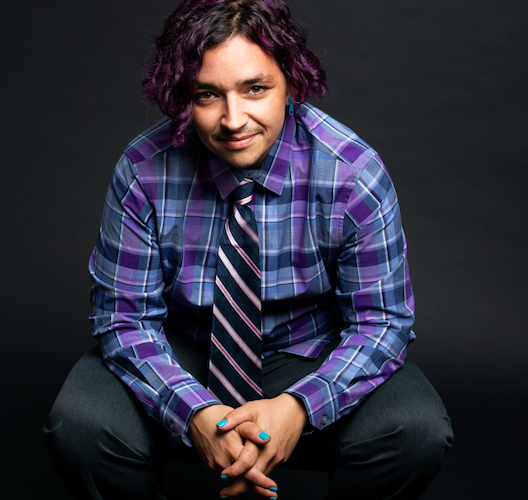
In the summer of 2019, Kyle Sawyer (he/they) participated in Ulex’s International Gathering of Activist Educators and went on to co-facilitate Transformative Collaboration for Trans Activists. As a trans, queer, mixed-race and white-passing individual Kyle is founder of Building Allies, who developed the Active-Ally Model through their own experiences as an anti-oppression facilitator. Interview by Lindsay Alderton
Image courtesy of Tess Lotta Photography
Before sitting down to interview Kyle for this piece on privilege and allyship, it’s probably worth mentioning that I was feeling pretty nervous. As a person who’s been called out in the past I’ve noticed the impetus to step back so as to not risk screwing up again. Even though my silence, my doing nothing, only continues to uphold systems of harm.
The model of Active Allyship that Kyle has developed offers a framework of key stages to navigate through the messy but necessary terrain of relating, of taking risks and being vulnerable in order to develop greater connection. Awareness of privilege, as Kyle spells out, is not enough. It is only through action that we dismantle systems of structural oppression, and to take action we have to be willing to take the risk of getting things wrong.
What Kyle aspires to offer is a roadmap through challenging terrain.
Thanks for speaking with me today Kyle. Can you tell me a little bit about how the Active-Ally framework was developed, and who it’s for?
Our vision at Building Allies is to work with anyone who is willing to turn their privilege into change.
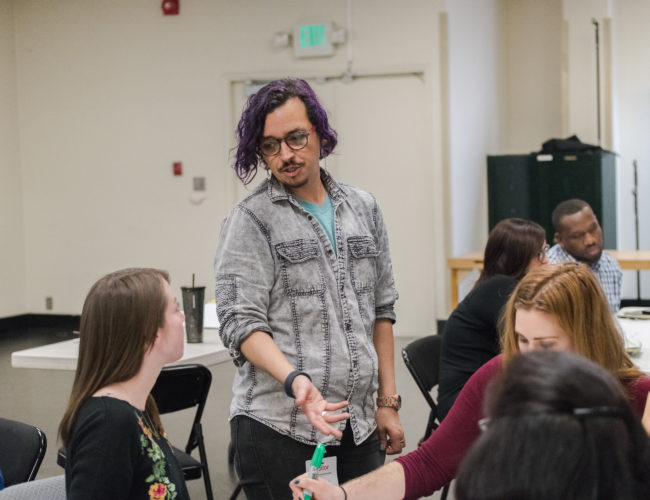
Image: Courtesy of Center Theatre Group
A little over a decade ago I began my transition and started speaking to college classrooms to tell my story and raise awareness of trans identities. After a couple of years of doing this I started to become aware of the very privileged aspect of my transition story and noticing that the folks in the room didn’t really know what to do after the conversation had finished. They liked me and thought I was cool but they didn’t know what to do in terms of allyship. Then two weeks after I participated in a large trans panel with over 200 students and multiple educators and administrators a trans student was attacked in a bathroom on campus. It was at this point that I really began to question ‘What are we actually doing?’
At the same time I was becoming more and more aware of my privilege – I am mixed race with light skin and have a lot of white privilege in the States. I decided to start highlighting that privilege and bringing it into my workshops and to go deeper with this line of inquiry. Because despite so much that had already been done we were still fighting the same fight in so many ways, and not really talking about the intersection of anything. ‘We’ being the allies who are not of the marginalized class. What we’re seeing are allies who want to be good allies, but who stop doing the work because someone calls them out and they don’t know how to process that. They get stuck, and don’t know how to go on.
Concurrent to this, situations were happening in my own experiences when I would mess up and be called out. I would notice how these failures felt in my body and how they would affect my ability to move forwards, how I would need to pause in what I was doing to process what was going on. From that pause I could then reflect on what I had done wrong and what I needed to learn, recognise what was harmful – even though my intentions had not been to cause harm – which is often a key moment that many of us have to go through.
Around me I was witnessing these same situations occurring with many other people and from this the idea of Active-Allyship was born – of how we might be able to turn privilege into change.
I’m wondering what you think about the word ‘ally’, and whether its lost some of its efficacy to build trust, or support?
Due to performative allyship, the term ‘ally’ has become a bad taste in the mouth for many, and yet I really don’t know of any better word to describe the work that allies do. But by placing the word ‘active’ in front of allyship there’s a reminder of the call to action. Because to be an actual ally you must be doing something. Awareness is not enough. That is what the word ‘performative’ is calling out.
Call-out culture has arisen because people haven’t been able to sit in their discomfort around being privileged and then actually do something about it. Frustrations have arisen because many marginalised folks have been saying ‘You need to see this, you need to see this’ but then it’s not being seen, and then they’ve gotten angry because they’re done with trying to be calm and collected. It’s like ‘Now we’re going to be angry so that you see this. So here you go.’
Call-out culture comes because awareness of privilege is not enough. Action is required. But the risk is that a person leap-frogs over their awareness or discomfort into performative action – for example, a tweet that might position me in such a way as I appear to be an ally – rather than actually staying with, being with, what’s really fucking uncomfortable.
That’s where the five tenets come in. They are a way of holding us through the discomfort as we move through the three phases of Active Allyship.
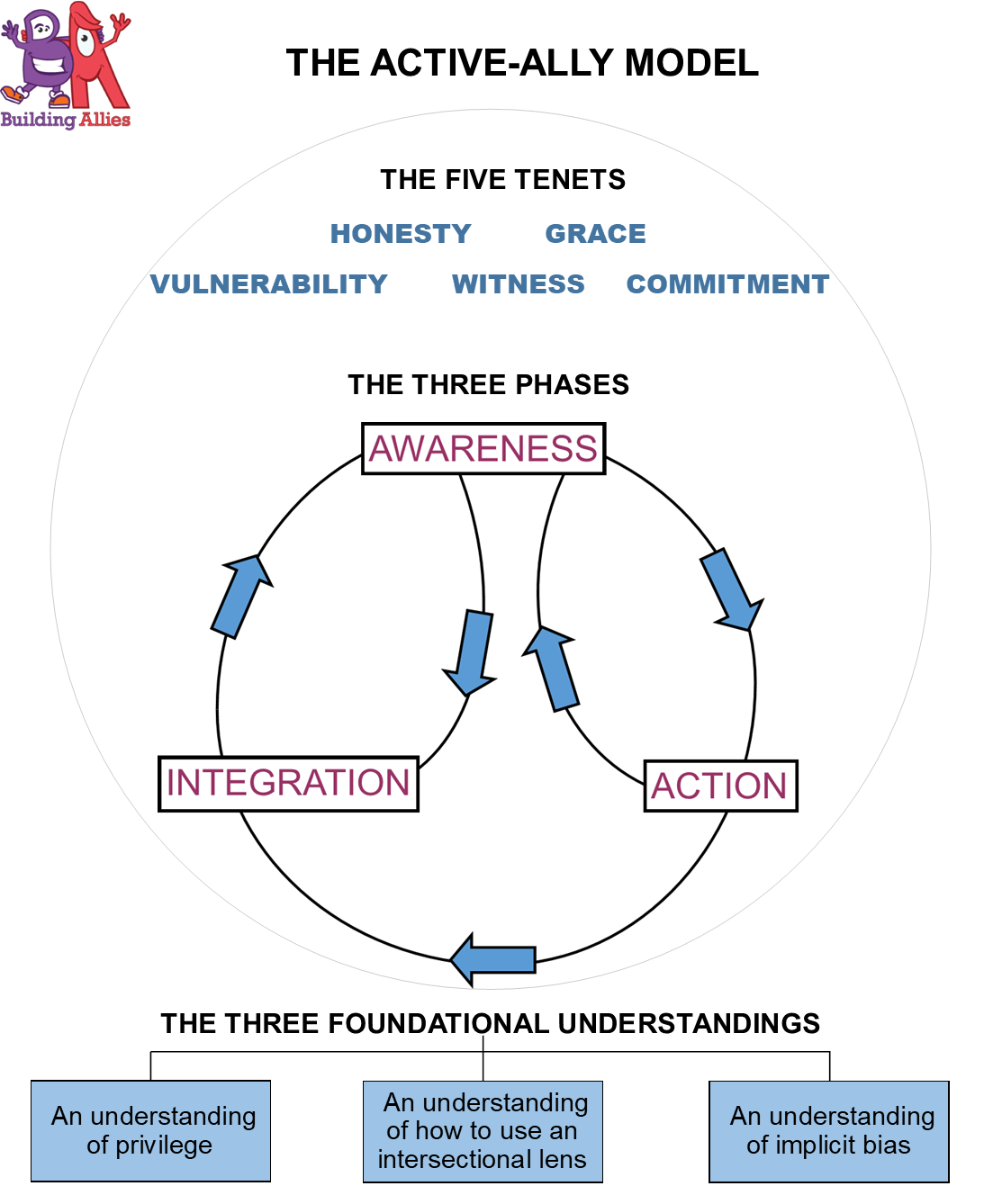
Talk me through the phases please.
The model is established on three foundational understandings: an understanding of privilege, an understanding of how to use an intersectional lens and an understanding of implicit bias.
On top of these understandings sit the three phases that make up the Active-Ally model – Awareness, Action and Integration.
The five tenets help us move through the phases in a meaningful way.
Awareness is the first stage. In the Active-Ally model awareness is both a self-awareness and a systemic-awareness. Self-awareness looks at how we engage with the world, the ways in which we are perceived, and the ways in which those perceptions create a layer of privilege for us. It involves engaging in intense personal honesty. Systemic-Awareness is about looking outside ourselves. It involves acknowledging that certain identities are privileged over others. It is about finding our spot within the systems of privilege and challenging those systems. It is about learning how to use those privileges to create change within the systems, within the institutions, within ourselves.
Action is the second stage. It’s when often things can get messy. More often than not folks make mistakes. They’re going to try something that just falls flat and that can bring up feelings of guilt, of shame, of discomfort. It can also allow us a moment to go back to awareness. It’s also in this stage when “performative” allyship shows up. Action can be tangible moments and it can be sitting in our awareness, sitting in the discomfort. The purpose of staying in the vulnerability is so that when we step into a tangible action, we have come to it honestly and with grace.
The third phase is integration. This is the most difficult to define, because it is an extremely personal and gradual process. It happens when someone has become aware of a new behavior or an implicit bias and they’ve moved through that awareness into action, tried a bunch of stuff, and found one day that they’re doing something different and they haven’t really had to think about it. It’s become naturalized. But that’s not a stopping point because that in itself can move us into a new place of awareness, into a new way of being.
Awareness is in conversation with integration the same way it is in conversation with action. Awareness is the vital checking mechanism. The model is cyclical in its nature and all the phases are in conversation with each other. But it doesn’t end. You’re never going to reach a point where you say ‘I’m done, I’m an active-ally forever’. It just doesn’t work that way.
So you mean I’m not going to get an Active-Ally for Life certificate?
You’re not going to get a certificate. You’re not going to get a badge or a sticker for your window. And you know what, that’s actually really difficult for some folks. That there is this cycle of anti-oppression work that doesn’t come to an end can start to feel really big. But it’s actually not very big because once you settle into this process, this model, and have integrated it into your way of being, it’s actually not a difficult thing.
There will be difficult moments for sure – sadness, mistakes, feeling like a failure, setting people right – all of those things are going to happen, of course – but what’s beautiful about all of that, and about this model, is that it offers people a place of possibility no matter where you’re at. I get chills when I think about that because I used to live a life without possibility. Now it is always there. This is a guide for a different way of being and that makes me excited.
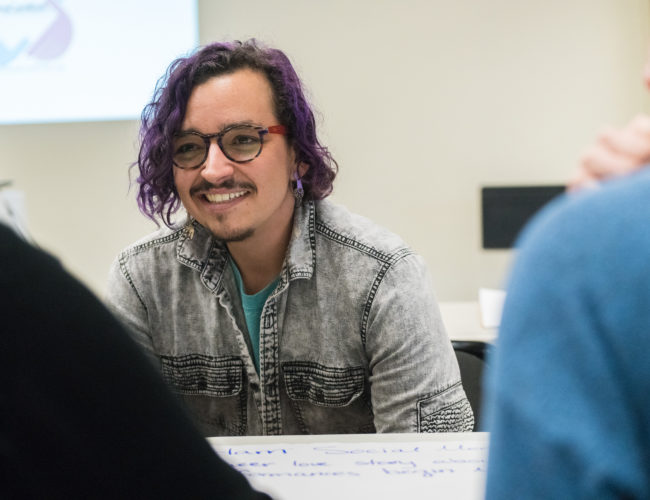
Image: Courtesy of Center Theatre Group
How do the 5 tenets underpin the model?
The 5 tenets are our grounding. They help us reorient. They are honesty, grace, vulnerability, witness and commitment.
The model is awareness to action and integration but the tenets are what hold us through it. None of the tenets are easy, because systemic change is not easy. It took a long time to get where we are so it’s going to take a minute to unpack it and take it apart.
Honesty helps us to be with our discomfort as we become aware of our underlying beliefs about a certain group or people, what we feel in our bodies in response. So for example someone might say ‘Oh no I’m not anti-black’ but then they’ll witness themselves crossing the street when black men are walking towards them. They notice this with honesty. But whilst they’re noticing that they’ll also feel discomfort, they’ll probably start to feel really shitty about themselves, and so the second tenet is Grace.
Grace is the quality we bring to ourselves and to others within their own process of trying to learn and grow. Grace allows for possibility. Grace is the space we come to when sitting with honesty, it’s not about right or wrong, it’s not about locating truths, it’s about embracing the complexities of the human experience. It’s about supporting our process of understanding as we challenge ourselves and the systems around us.
The third tenet is Vulnerability. This is what invites others in. To be vulnerable is to risk and opens space for shame, for love,, harm, for the possibility of growth. Vulnerability requires honesty and grace because it is to expose ourselves to others.
The fourth tenet is Witness. To witness ourselves and to be witnessed by others. Witnessing facilitates the space to move from private to public, and in doing so to remove the silos and the vacuums of this work. It’s important because what I witnessed in others and in myself is that it’s really scary to try new things and to be seen whilst doing it, and call-out culture has added to that fear of being witnessed. But it’s so very important because it’s when we are witnessed that we can move from awareness to action and from action to awareness. It’s how we can learn, it’s how we can practice, it’s how we can grow.
The fifth tenet is Commitment. Commitment is agency, volition and a choice to live in honesty and find grace in vulnerability. Commitment will vary at different times and that’s okay, sometimes you may need to retreat and sit in the awareness for a while, that might be what you need to do, and that’s okay, that’s the grace.
One of the things that I love most about the 5 tenets is that they can be applied to just how we do life, how we move through and learn something new about ourselves that we want to change and how can we hold ourselves and others. Systemic change requires the system to shift, but we can’t shift the system if we don’t acknowledge the challenge of the ways in which we are a part of the system, the way in which we uphold it.
Where are some of the places you’ve seen the model used?
I’ve seen the model used in supporting primary and secondary educators when they’ve become aware of how one-sided the curriculum is, the biases within it, the racism embedded in it. In response to this awareness some schools have taken action by establishing a working group to look at different ways of challenging and improving the curriculum and the system within the school or district.
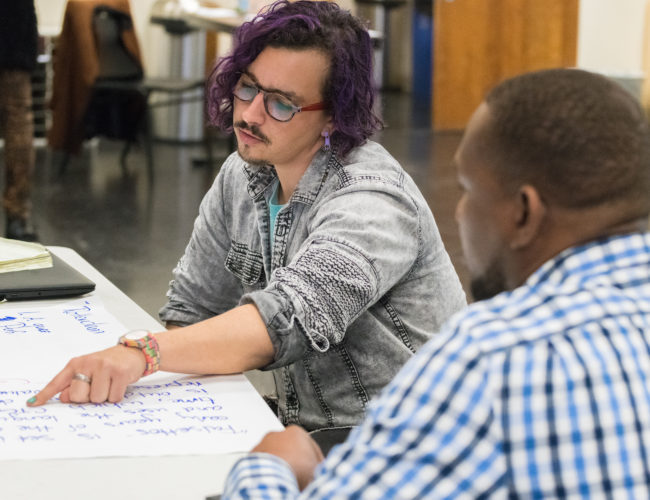
Image: Courtesy of Center Theatre Group
I’ve also seen the model used by mental health service providers specifically working with trans clients, and some of what they’ll look at is their processes for taking on a client, and then a number of them will come to an awareness and an honesty about how they actually feel about trans folk. From this honesty they’ve had to address how this will affect the way they are going to support someone when they’re showing up as a therapist.
Other folks bring the model into their own lives in much more personal and direct ways, as a tool to help them find grace in those moments that are really really difficult, when challenging realisations arise about who we are and how we are.
Where’s the edge of your own learning around this kind of work?
Like most people, what I really struggle with is the vulnerability of putting this work out there. I struggle with the risk, the realities of messing up, of causing harm. It’s really hard. I’m getting better at finding grace than I was in the past, but I think my edge still centres around being vulnerable, in putting this stuff out there. Also sometimes as active-allies we get it right, and we need space to celebrate that too. I don’t talk about that part enough but it’s important.
I’m passionate about getting this work out there cause I’ve seen Active-Allyship embodied by people who follow the tenets, follow the process and witnessed real transformations occur. If folks are willing to use the model then we can create some amazing change together, and that edge of learning keeps me really excited.
What are some of the ways people can get in touch or learn more?
As an organization, we’re still super new. It’s just me! So one of the key ways you can help is to tell people about the model and share it. I offer customized workshops and you can also sign up for the newsletter on my website, follow our social media and read the blogs.
More information:
Building Allies website
Building Allies Facebook
READ ON: “The Commons Social Change Library : A New Chapter in Social Change»»»